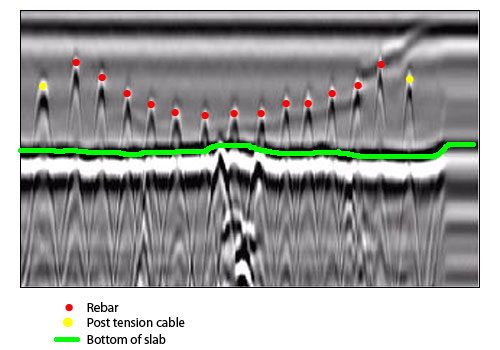Discover RainierGPR Service Areas for Trustworthy Concrete Scanning Solutions
Discover RainierGPR Service Areas for Trustworthy Concrete Scanning Solutions
Blog Article
Enhancing Project Preparation and Execution With Advanced Concrete Scanning Methods
In the world of project preparation and execution, precision and insight are important elements that can make the difference in between success and obstacles. Advanced concrete scanning methods have emerged as a sophisticated tool set to boost the standards of project monitoring within the building and construction market.
Benefits of Advanced Concrete Scanning Strategies

Improved Accuracy in Job Evaluations
Enhancing job analyses through sophisticated concrete scanning strategies dramatically boosts the precision and dependability of building and construction evaluations. By employing innovative scanning innovations such as ground-penetrating radar (GPR) and 3D imaging, job groups can currently get detailed insights into the problem of concrete structures, identifying prospective problems or weaknesses that may not be visible to the naked eye. This enhanced level of accuracy in job assessments makes it possible for building and construction specialists to make more educated decisions relating to repair service and upkeep approaches, bring about boosted general job end results.
Additionally, the raised precision in task assessments accomplished with sophisticated concrete scanning methods assists in reducing the risk of unpredicted problems during the building and construction stage. By proactively finding concealed anomalies within concrete frameworks, such as rebar rust or voids, project groups can attend to these issues early on, avoiding pricey hold-ups and rework later on in the job lifecycle. Ultimately, the improved precision in project analyses assisted in by advanced concrete scanning strategies adds to higher effectiveness, cost-effectiveness, and quality in construction projects.
Very Early Recognition of Architectural Challenges
Very early detection of architectural challenges plays a critical duty in ensuring the honesty and security of concrete frameworks throughout the building and construction procedure. Determining prospective concerns at a beginning permits for prompt treatment, preventing pricey rework, timetable delays, and safety threats. Advanced concrete scanning techniques, such as ground-penetrating radar (GPR) and 3D imaging, allow job groups to uncover covert flaws, gaps, support design disparities, and other anomalies that might endanger the structure's stability.
By carrying out these techniques during the preparation and execution stages, construction experts can proactively address structural difficulties prior to they escalate into significant problems. For example, finding insufficient concrete cover over support bars beforehand can avoid rust and architectural weakening in the lengthy run - RainierGPR Service Areas. Furthermore, determining variants in concrete thickness or density can help maximize product usage and guarantee consistent strength homes across the structure

Eventually, very early recognition of structural obstacles with innovative concrete scanning not just improves the overall quality and resilience of the construction however likewise adds to a safer constructed setting for passengers and individuals.
Enhanced Safety Steps in Construction
The implementation of robust safety protocols is necessary in the building and construction sector to reduce risks and protect the well-being of stakeholders and employees. To boost security measures, building and construction firms are significantly embracing technological improvements such as wearable gadgets that keep track of workers' essential indicators and identify possible health and wellness problems in real-time. By prioritizing safety via the unification of innovative innovations and extensive training programs, construction projects can significantly lower crashes and produce a protected functioning setting for all included.
Streamlining Project Monitoring Processes
To maximize operational efficiency and make certain task success in the building industry, an emphasis on enhancing project monitoring processes is crucial. By applying effective project administration processes, building and construction jobs can minimize hold-ups, decrease costs, and boost general efficiency. One key element of improving project monitoring is making use of advanced modern technologies such as Structure Info Modeling (BIM) software program, which allows see here now real-time collaboration, clash detection, and exact task scheduling. Furthermore, the adoption of cloud-based project monitoring platforms permits seamless communication amongst group members, immediate accessibility to project data, and the capability to track progress in real-time.

Verdict
Finally, the utilization of innovative concrete scanning strategies provides countless benefits for task preparation and implementation. These techniques supply enhanced precision in task evaluations, very early recognition of structural difficulties, improved precaution in building and construction, and structured job monitoring processes. Integrating these methods into job workflows can ultimately lead to more successful and effective end results in building and construction projects.
Ultimately, the improved precision in job assessments facilitated by advanced concrete scanning strategies adds to better performance, cost-effectiveness, and high quality in building projects. RainierGPR Service Areas.
To maximize functional effectiveness and make certain job success in the building industry, an emphasis on special info enhancing project management procedures is crucial. By applying reliable job management procedures, building projects can decrease hold-ups, decrease prices, and enhance general productivity. By simplifying job management procedures through innovation integration, clear interaction, and data-driven approaches, building projects can accomplish greater effectiveness, cost-effectiveness, and effective results.
These techniques supply improved precision in project analyses, early recognition of structural challenges, improved safety procedures in construction, and structured project administration processes.
Report this page